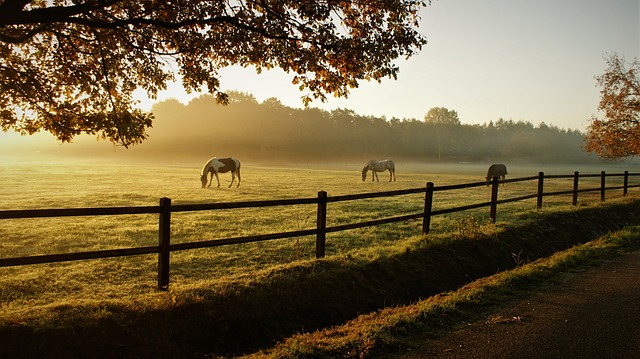DIY Fence Installation: A Comprehensive Guide for New Bedford Homeowners
Are you considering a DIY fence project for your New Bedford, Massachusetts property? This step-by-step guide is designed to empower local homeowners with the knowledge to install a durable and aesthetically pleasing fence. From choosing the right materials to mastering the final touches, we’ll cover all aspects of the process. Whether you’re opting for wood, vinyl, or chain-link, understanding the unique considerations for New Bedford yards is key. Get ready to transform your outdoor space!
- Understanding Your Fence Options for New Bedford Yards
- Measuring and Planning Your Fence Layout
- Preparing the Ground for Installation
- Step-by-Step Guide to Post Setting
- Attaching Panels and Railings: Tips and Tricks
- Final Touches and Maintenance After Installation
Understanding Your Fence Options for New Bedford Yards
When it comes to fencing your New Bedford, Massachusetts yard, there are numerous options to consider. The first step is to evaluate your specific needs and preferences. Do you seek privacy, security, or merely a decorative element? Each type of fence—from wooden picket fences to vinyl or chain-link—offers unique benefits and styles that cater to different requirements.
Additionally, local regulations and neighborhood associations may have guidelines regarding fence height, materials, and placement. Familiarize yourself with these restrictions to ensure your DIY installation adheres to the necessary standards. Understanding these factors will help you make informed decisions, ensuring your new fence not only enhances your outdoor space but also complies with relevant regulations.
Measuring and Planning Your Fence Layout
Before you begin installing your DIY fence, accurate planning is essential. Start by measuring the perimeter of the area where you want to place the fence. Mark out the boundary with string or chalk to ensure a straight line. Consider factors like existing structures, trees, and shrubs that might interfere with your layout. Create a detailed plan, sketching out the dimensions and placement of your fence panels. This step will help you visualize the final result and identify any potential challenges, ensuring a smooth installation process.
Measuring and planning allow you to select the right materials and tools for the job, saving time and money in the long run. It’s also crucial for obtaining necessary permits if required by local regulations, so don’t skip this vital step!
Preparing the Ground for Installation
Before installing your fence, preparing the ground is a crucial step to ensure a sturdy and level foundation. Start by clearing the area of any debris, such as branches or rocks, which could hinder the installation process. Use a garden hoe or flat shovel to remove any grass or weeds, and break up any compacted soil to create a smooth surface. This preparation is essential for creating a solid base for your fence posts, ensuring they are securely set in place.
Additionally, marking out the perimeter of your desired fence line with string or spray paint will help guide you during installation. Make sure the ground is well-compacted along this line to provide stability and prevent sinking over time. This simple step can save you time and effort later on, ensuring a neat and precise fence placement.
Step-by-Step Guide to Post Setting
Setting posts is a crucial step in DIY fence installation, ensuring your fence’s stability and longevity. Begin by marking the fence line with chalk to ensure accuracy. Dig holes for the posts using a post-hole digger, making sure they are deep enough (typically 3/4 of the post’s height) and wide enough (at least 8 inches in diameter). Clean the holes of any debris, ensuring the soil is firm and compacted.
Next, insert your fence posts into the holes, checking for level with a spirit level. Fill the holes with concrete, using a bucket or hose to ensure it completely covers the bottom of the post. Allow the concrete to set for at least 24 hours before proceeding. Once set, trim any excess concrete from the top of the hole and check again for level. This meticulous process forms the foundation of your fence, supporting its structure and ensuring it stands strong against New Bedford’s weather conditions.
Attaching Panels and Railings: Tips and Tricks
Attaching fence panels and railings is a crucial step in your DIY installation project. Begin by ensuring all posts are securely in place, using concrete to anchor them firmly to the ground. Next, measure and mark where each panel will be attached, making sure they align with the posts evenly. Use brackets or hardware designed for your specific fence material to connect the panels to the posts. This ensures stability and prevents warping over time. For railings, measure the height required by local building codes and attach them securely to the top of the posts and panels. Ensure railings are firmly fastened at intervals along their length for maximum safety.
Final Touches and Maintenance After Installation
After successfully installing your new fence, it’s time to focus on the final touches and maintenance to ensure its longevity. Begin by inspecting the entire fence line for any loose or damaged posts or boards. Tighten any screws or nails and replace any rotten or broken materials immediately. Apply a high-quality seal or paint to protect the wood from the elements, especially if it’s untreated. This simple step will significantly extend the life of your fence.
Regular cleaning and maintenance are essential. Use a soft brush to remove dirt and debris, and sweep the area underneath the fence to prevent the build-up of leaves and waste. Check for any signs of wear and tear, such as warped panels or loose hinges on gates. Address these issues promptly to avoid larger problems in the future. Remember, keeping your fence well-maintained not only enhances its aesthetic appeal but also ensures it serves its intended purpose securely and efficiently.
